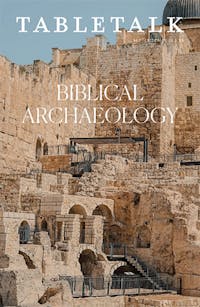
Request your free, three-month trial to Tabletalk magazine. You’ll receive the print issue monthly and gain immediate digital access to decades of archives. This trial is risk-free. No credit card required.
Try Tabletalk NowAlready receive Tabletalk magazine every month?
Verify your email address to gain unlimited access.
Archaeology is the study of ancient things. The discipline brings together history and science to engage in research, discovery, and analysis of the physical remnants of ancient civilizations to understand their contexts, cultures, practices, values, and beliefs. This work is extensive, with tens of thousands of archaeological sites under excavation around the world. Incredibly, despite all the work that has been done over the centuries, we have excavated only a tiny fraction of the archaeological sites that could be discovered and researched.
I once visited the ruins of the ancient city of Pompeii in southern Italy. Pompeii was quickly covered by volcanic ash from the eruption of Mount Vesuvius in AD 79, leaving the city extremely well preserved. The ruins were accidentally discovered fifteen hundred years later, and excavations have continued on and off since then. Touring with a woman who holds a Ph.D. in archaeology, I was astounded not only by the sheer size of the city (more than 160 acres) but also by the fact that only two-thirds of the city has been uncovered over the past four centuries or so. Scientists are currently working with newly developed, specialized X-ray machines and artificial intelligence to translate the numerous scrolls found in the library of Pompeii. The ongoing work at Pompeii is just an example of what is left to do around the world. Recently, satellite imaging has discovered more than ten thousand previously unknown sites, one of which archaeologists believe could be thousands of years older than the pyramids of Egypt and possibly the oldest city in the world. What’s more, only a small fraction of papyri (documents written on the leaves of the African papyrus plant) housed at the University of Oxford have been transcribed and translated from an 1897 find in Oxyrhynchus, Egypt. Some of our earliest manuscripts of the New Testament are found in this papyri collection.
As archaeology and technology advance, we will, Lord willing, continue to learn more about the history of the world and discover more physical evidence of the history of God’s people and of His mighty acts throughout history as revealed to us in the inspired and inerrant Scriptures. Although archaeology does not in itself prove that the Bible is trustworthy and true, it can offer material corroboration of the biblical record. Yet we know all the while that it is ultimately only our sovereign God by the power of the Holy Spirit who gives us the gift of faith in Jesus Christ, whose life, death, resurrection, and ascension are all described in the historical record of the Scriptures.
